Creating a cutout consists in extruding a profile and removing the material resulting from the extrusion.
You can create a cutout defined either by a sketch or an open geometry.
Open the CutOut1.CATPart document.
-
Click CutOut
 .
.
The Cutout Definition dialog box is displayed and the skin to be impacted by the cutout is displayed in a different color.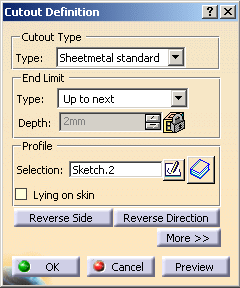
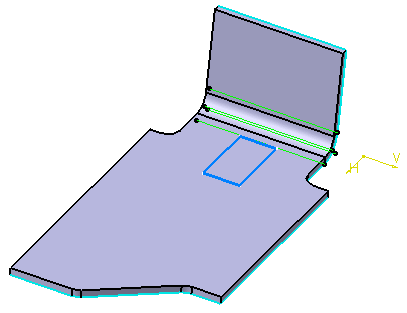
-
Select a profile (sketch.1 in our example).
It can be either a sketch containing one or more shapes, a wire, or a part.
A preview of the projected cutout is displayed. The vectors show the side and the direction of the cutout.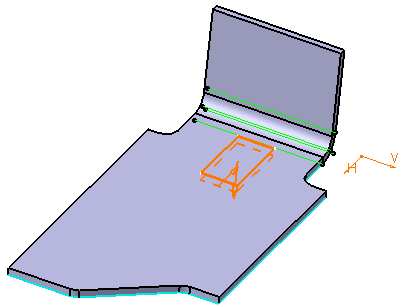

You are strongly advised to use a closed profile to create a cutout. In case you create a cutout from a profile containing more than one open contour, you are warned that the cutout may fail.

- Click Yes to select the profile anyway;
- Click OK to create the cutout;
If the Cutout fails, modify the profile in the Sketcher workbench.
or - Click No.
The profile is not selected.
Once the sketch is selected, you can modify it by clicking Sketcher  .
.
- The Reverse Side option lets you choose between removing the material defined within the profile, which is the application's default behavior, or the material surrounding the profile.
- The Reverse Direction option allows you to invert the direction of the extrusion pointed by the arrow.
-
Click OK in the Cutout Definition dialog box.
The cutout is created. 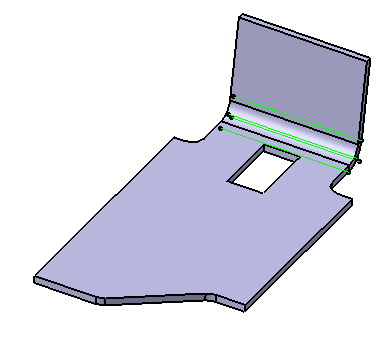

Several end limit types are available:
-
Dimension: the cutout depth is defined by the value measured along the direction.

The depth corresponds to the base feature thickness.
Please refer to Editing the Sheet and Tool Parameters. -
Up to next: the limit is the first face the application detects while extruding the profile. This face must stops the whole extrusion, not only a portion of it, and the hole goes through material.
-
Up to last: the application will limit the cutout onto the last possible face encountered by the extrusion.
-
-
In the specification tree, double click on Cut Out.1 to display the Cutout Definition dialog box.
-
Click More>> to display the maximum information.
The Direction is already selected (Sketch.1), that is perpendicular to the base feature.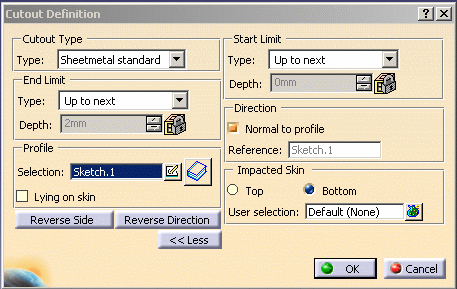
Here the Cutout's impacted skin is set to Default, that is, the surface on which lies Sketch.1. If you want to select another support for the cutout, click on  and select your
new support. It can be a web, a flange or the planar part of the
surfacic flange.
and select your
new support. It can be a web, a flange or the planar part of the
surfacic flange.
Specifying the support for the cutout avoid confusions in case of overlaps. In the following example two flanges are overlapping each other. 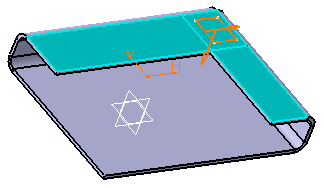
If you try to create a cutout on such a part, the following message is displayed: 
To avoid this, you have to select the exact support for the cutout. 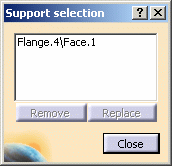
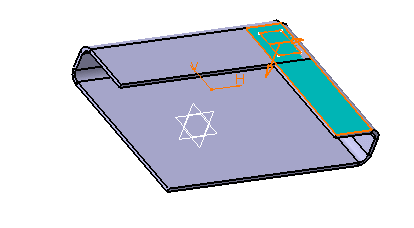

- When Lying on skin
is checked,
- The End limit and Start limit types are automatically set to Dimension and disabled,
- The Depth is set to 0mm and disabled,
- The skin to be impacted is displayed on the part.
The cutout is not projected anymore on the skin. It is based on a sketch that inevitably lies on a surface.
This option is available only when creating a standard cutout.
- In case the profile's edges and
the impacted skin to extrude are tangent, the sketch becomes
non-valid and the cutout cannot be created.
To avoid this, check Lying on skin or select a base feature as support to be able to create your cutout.
- When Lying on skin
is checked,
Creating a pocket Cutout
-
Click Cutout
 .The
Cutout Definition dialog box is displayed
.The
Cutout Definition dialog box is displayed 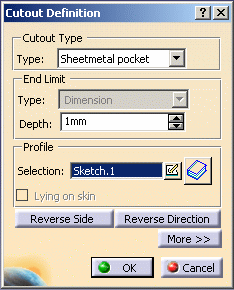
-
Select Sheetmetal pocket as Cutout type in the combo box.
The skin to be impacted remains grey and the End limit type is disabled. -
Set the Depth to 1mm.
-
Select Sketch.1 as profile.
A preview of the cutout is displayed. In our example, the cutout will impact only half the base feature. 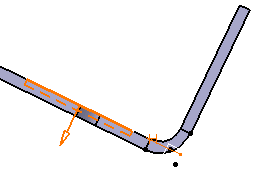
-
Click OK in the Cutout Definition dialog box.
The cutout is created. 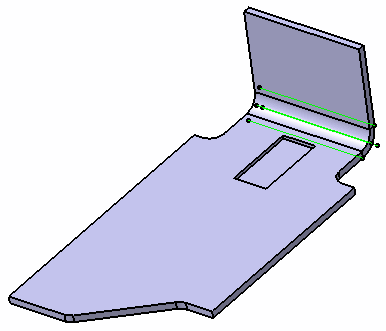
-
In the specification tree, double click on Cut Out.1 to display the Cutout Definition dialog box.
-
Click More>> to display the maximum information.
The Direction is already selected (Sketch.1). By default, it is set as normal to the profile. 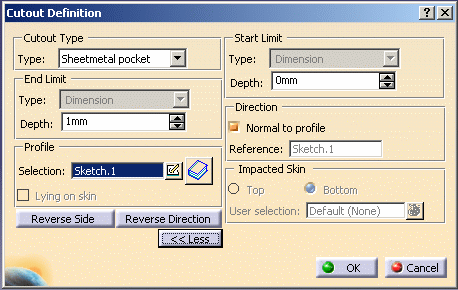
-
Uncheck Normal to profile.
-
Click inside the Reference field to activate it.

-
Select Line.1 to perform a cutout normal to the line direction.


Should you need to create a line, right-click on the Reference field and select Create Line. 
Refer to Creating Lines for further information. -
Click OK to create a cutout normal to the line direction.
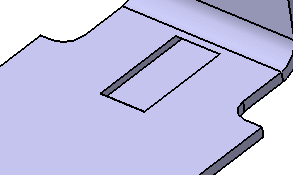

- The pocket cutout can be created only on a planar and monosupport surface (i.e. a web a flange or the planar face of a surfacic flange).
- May you want to create a cutout on an overlapping element or a bend with radius=0, either choose the top skin of the element (as shown in the picture above), or unfold the part to create the cutout.
- You cannot create a pocket cutout on a stamp or a surfacic flange.
- You cannot create
- a standard cutout on a pocket cutout
- a standard cutout on a feature impacting a pocket cutout.
- You can create
- a pocket cutout on a standard cutout.
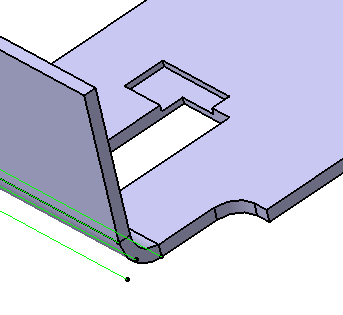
- a pocket cutout on a pocket cutout,
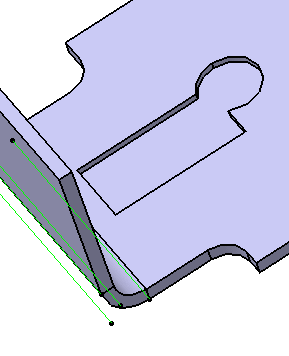
- a pocket cutout on a standard cutout.

Once the Reference Direction and the Objects Support fields are filled in, the selection can be modified but cannot be cleared. Cutouts can be created directly on the unfolded view of the part. You can click Catalog  to
open the
Catalog Browser.
to
open the
Catalog Browser.
- Refer to Component Catalog Editor documentation to have further information on how to use catalogs.
- Refer to the Create a Pocket task in the Part Design User's Guide for further details on how to create cutouts.
![]()